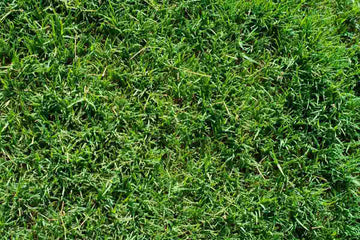How Often Should You Water BIMINI® Bermudagrass?
by Jamie Tedder on Feb 27, 2024

Bermudagrass thrives in warm-climate regions like Florida. Due to its excellent heat and drought resistance, it is a great option for lawns, golf courses, and athletic fields.
This warm-season grass thrives in full sun. It is known for its rapid growth, spreading through rhizomes and stolons, which results in lush, dense, green growth. Bermudagrass is generally known for its emerald green color and soft feel.
What is BIMINI® Bermudagrass?
One such variety is BIMINI® Bermudagrass, which shares many traits with other Bermudagrasses but delivers improved features. BIMINI stands out for its low maintenance and heightened tolerance to traffic and weather conditions, including heat, cold, drought, and humidity. It also has a finer leaf texture that feels softer underfoot than other Bermuda cultivars. These qualities explain why BIMINI® Bermuda is widely used on golf courses and other high-traffic areas requiring durable and resilient grass.
While BIMINI® and the rest of the Bermudagrass varieties are known for their durable and resilient nature, they require regular maintenance to thrive. One key aspect of maintaining their healthy, dense growth is to ensure they receive adequate and consistent watering, which will need adjustment based on factors such as the weather and stage of development. Continue reading to learn the best practices for watering your BIMINI® Bermudagrass sod.

BIMINI® Bermudagrass Watering Frequency and Maintenance Tips
Bermudagrass has a built-in ability to withstand water stress. However, some adjustments will need to be made as the seasons change. Consistent watering is crucial to encouraging more profound root growth and denser foliage, which helps your lawn withstand environmental stressors and maintain its lush appearance.
Water Two Times a Week
The general recommendation for watering BIMINI® Bermudagrass is two times a week. The duration of each watering session should be based on the output of the conditions in which the grass is being grown. Watering less frequently but profoundly encourages stronger and denser root development, making your lawn more resilient to drought and heat stress. Overall, irrigation aims to prevent the grass from becoming stressed and wilted. Therefore, adjusting your irrigation schedule throughout the year will be necessary.
Water New Lawn Frequently to Keep the Soil Moist
BIMINI® Bermudagrass is available as sod and grass plugs, providing a convenient option for establishing a new lawn or repairing damaged areas. It can significantly reduce the time needed to establish a new lawn compared to seeding, and its rapid establishment also allows it to outcompete weeds and reduce the risks of soil erosion effectively.
When establishing a new lawn from sod, make sure the soil remains consistently moist for the first two weeks to encourage faster and stronger root growth. This may require multiple daily watering sessions during the initial establishment stage.
Skip Watering After Prolonged Periods of Rain
When the soil is already saturated from rainfall, additional watering can lead to waterlogging, which can suffocate the roots and potentially lead to root rot. Overwatering can also encourage fungal growth, making your lawn susceptible to disease.
During extended periods of rain, you may not have to water your lawn for at least a week or longer. Adjust irrigation cycles accordingly during heavy rain events.

Should You Water Dormant Grass?
Warm-season grasses usually enter a dormant state when temperatures drop below 65 degrees F in the Fall. During dormancy, the grass turns brown and slows its growth, requiring less water. Nevertheless, dormant grass will still need periodic watering to stay healthy.
There are exceptions, however, such as with the relatively warm winters in Florida, where the grass may be semi-dormant and will continue to grow as usual. BIMINI® Bermudagrass also has a heightened tolerance to cold and is known for its ability to maintain its vibrant emerald green color in lower temperatures. In a trial with Oklahoma State University, BIMINI® ranked number one in traffic tolerance and durability. It was the last to go dormant in the Fall and the first to green up in the Spring.
Final Tips
A seemingly mundane task such as watering your lawn will significantly affect its health and appearance. The frequency of watering your BIMINI® Bermudagrass should be adjusted based on weather conditions, among other factors. Besides watering frequency, it's crucial to consider the timing of the irrigation cycle. Watering your lawn early in the morning is generally recommended to maximize water absorption and reduce moisture loss through evaporation during the day's heat. Conversely, watering at night can encourage diseases, as the grass remains damp for an extended period, creating an environment conducive to fungal growth.

Establish a Drought-Resistant Lawn with BIMINI® Bermudagrass
In conclusion, BIMINI® provides a drought-tolerant lawn option that stays green even in adverse conditions, including heavy foot traffic, heat, drought, and cold. BIMINI® has proven to be a top choice for golf and sports field applications and can be used for residential and commercial projects.




